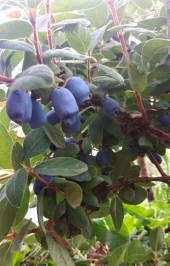
 3
3




 6
6




Building soil in the Yukon.







 1
1




 2
2




Building soil in the Yukon.











 2
2




Building soil in the Yukon.







 1
1




 1
1




I don't own the plants, they own me.




A build too cool to miss:Mike's GreenhouseA great example:Joseph's Garden
All the soil info you'll ever need:
Redhawk's excellent soil-building series

























 1
1










 2
2




$10.00 is a donation. $1,000 is an investment, $1,000,000 is a purchase.
 1
1




 1
1




“Uncertainty is an uncomfortable position. But certainty is an absurd one.”
― Voltaire
 1
1








Steven Wilding wrote:I unfortunately , have only 1 plant so far, but my neighbour's has a few. My plant was doing poorly this year, and it was suggested that my plant needed more nitrogen and acidity. I started dumping my coffee grounds around the base of the plant. It made a remarkable difference.
“Uncertainty is an uncomfortable position. But certainty is an absurd one.”
― Voltaire
 1
1





|
Don't count your weasels before they've popped. And now for a mulberry bush related tiny ad:
The new purple deck of permaculture playing cards
https://www.kickstarter.com/projects/paulwheaton/garden-cards
|





